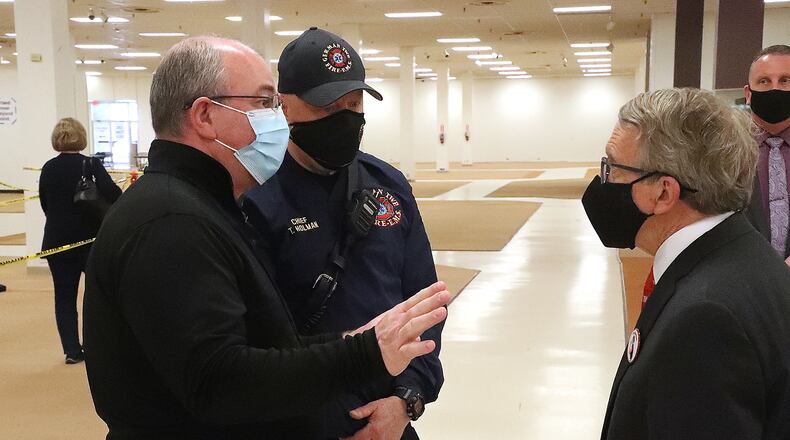The metric had a slight increase from 143.8 cases per 100,000 last week to 146.9 cases per 100,000 this week.
If the state can stay under 50 cases per 100,000, all public health orders will be lifted.
On Thursday, Ohio reported 1,501 daily cases, according to the Ohio Department of Health. The number is in line with the state’s 21-day average of 1,509 cases a day.
“We are really at a point now where our cases were dropping and have leveled out.” DeWine said.
Throughout the pandemic, the state has recorded 1,006,171 total cases.
Ohio is scheduled to receive its largest vaccine shipment so far next week, with 571,460 set to arrive, DeWine said.
The state will receive a combination of Johnson & Johnson, Moderna and Pfizer vaccines. Currently, Pfizer is the only vaccine authorized in the U.S. for ages 16 and older. The other two shots are authorized for adults.
Starting Monday, eligibility will open to Ohioans ages 16 and older.
More than a dozen regional mass vaccination sites are expected to open on Wednesday, DeWine said. The opening date depends on when the clinics receive their vaccine shipments. A regional mass vaccination site at the Dayton Convention Center is scheduled to receive 5,000 vaccines next week.
The regional sites included 11 stationary locations and four mobile vaccine clinics.
As part of the state’s effort to continue offering the coronavirus vaccine to nursing home and assisted-living residents and staff, the state will be posting the names of more than 200 facilities that have not signed up for Ohio’s Vaccine Maintenance Program.
DeWine noted that it is possible the facilities have arranged to get the vaccines on their own, but they have not indicated that to the state.
“Our fear is that people in nursing homes are not being protected as well as they could be protected because the vaccination is not continuing,” he said. “Nursing homes have people in and out as far as new residents; they have new employees. We must make sure that these people have every opportunity to get vaccinated.”
As of Thursday, 3,028,527 people in Ohio have received at least one dose of the COVID vaccine. More than 80,000 people received their first dose in the last 24 hours, DeWine said.
More than 70% of Ohioans ages 80 and older have started the vaccination.
About the Author
